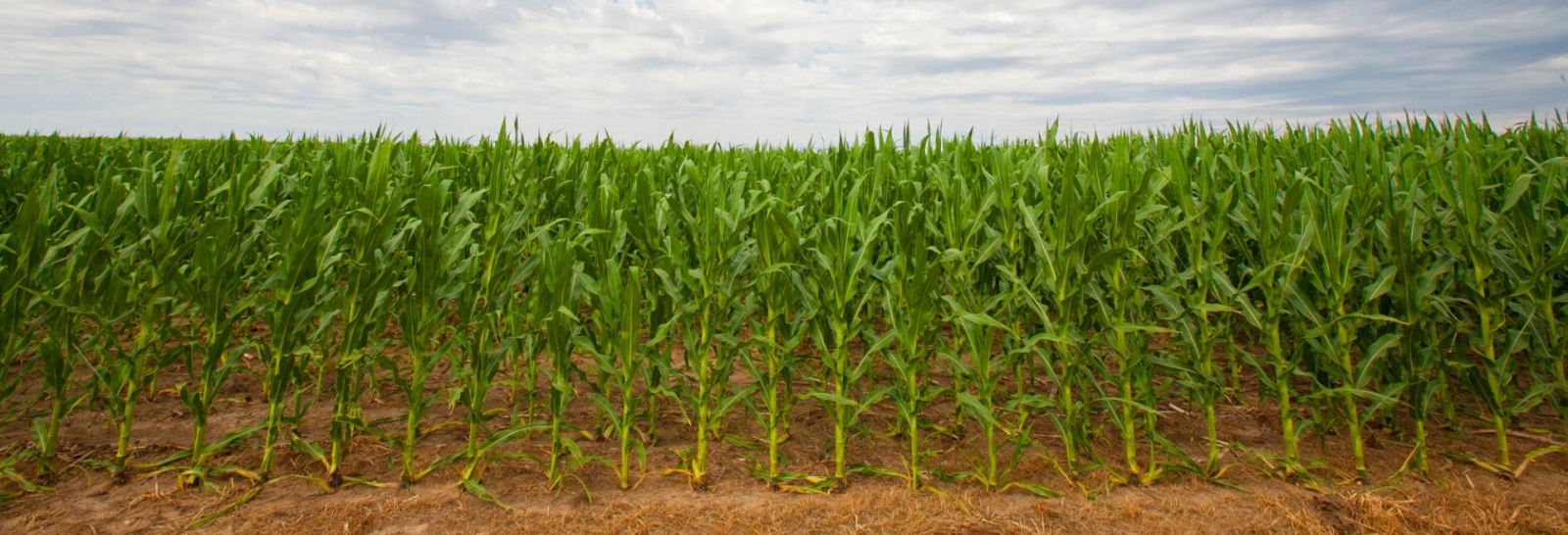August 10, 2007
Before its Named
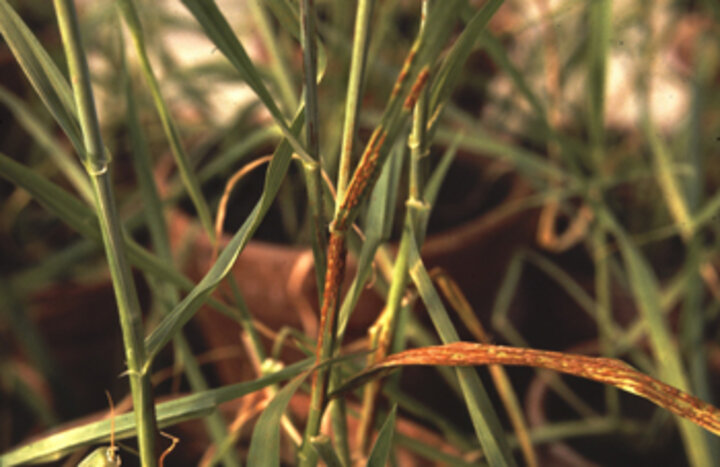
|
| Testing a wheat variety in the greenhouse for stem rust. |
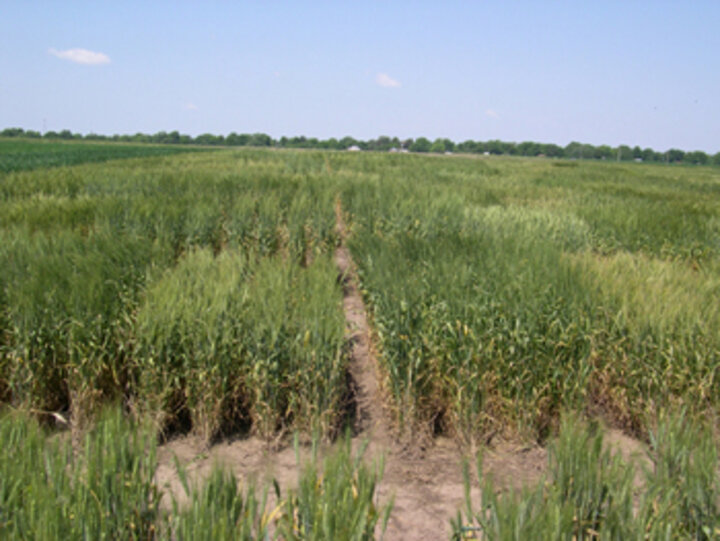
|
| Breeding nurseries are located across the state to test crosses in different environments. |
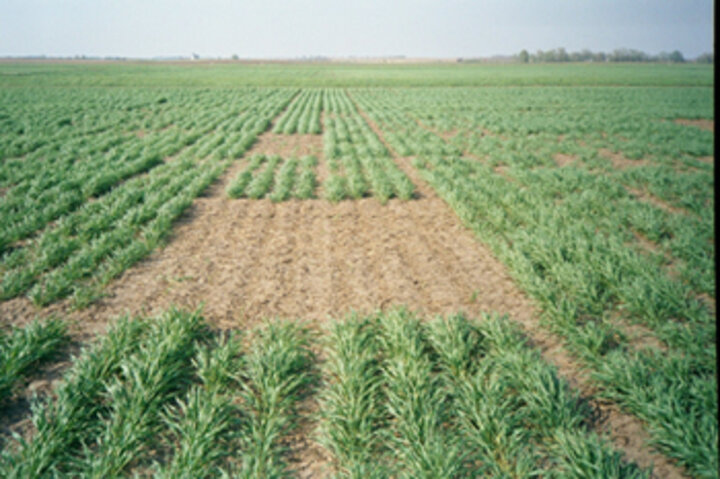
|
| Wheat variety trials provide information on a number of traits, as in this example of a variety that winterkilled. |
Before you see a new wheat variety at a field day or hear about its early success from a neighbor, researchers have studied thousands of plants trying to find just the right combination of traits to perform well in Nebraska. In the following article, UNL plant breeder Stephen Baenziger describes the long process from initial cross to marketable seed.
There are three phases to every wheat-breeding program:
- The creation of new variation, usually through hybridization (crossing), but also through mutations and in the future, genetic engineering;
- Inbreeding and selection for the best variants; and
- Extensive evaluation to determine the true merit of the selected line (basically, is it good enough to be released for commercial production).
To complete all three phases, it takes 12 or more years (one to two years for the first phase, five to six years for the second phase, and four to five years for the last phase.
The important aspects of the breeding process all relate to developing varieties that are better than the current varieties for at least one major trait. In Nebraska, the four main characteristics that every new release must have are:
- Ability to survive the Nebraska winter,
- Resistance to stem rust;
- Exceptional agronomic performance; and
- The ability to be used to make bread (our traditional market) or noodles (an emerging market).
While these four traits are critically needed for any wheat release, many other traits are also valuable and sought after. These include resistance to wheat soilborne mosaic virus; wheat streak mosaic virus; leaf and stripe rust and Hessian flies as well as the variety's ability to grow optimally under irrigation and tolerate high or low pH soils. In selecting lines that meet these four criteria, a team effort is critical and probably no program at the University of Nebraska-Lincoln has benefited more from the collegial nature of our colleagues and the University's commitment to the needed infrastructure to support agriculture.
Steps to Development
Initial Crosses. Every year about 800 crosses are made in the greenhouse. The next generation is grown in the greenhouse or in Yuma, Ariz. to ensure that ample progeny from every cross will exist when the next generation is planted at Mead. Though there is little wheat grown near Mead, this location is critical because lines that survive the winter at Mead will survive everywhere in Nebraska. Two generations are grown at Mead and every succeeding selection is grown at Mead with the idea that in the twelve years of development, a few years will have a sufficiently harsh winter to ensure lines can survive in producers' fields. Our simple philosophy is that it is better for a line to die at Mead and be dropped from the program, than to have it die in a producer's field.
Initial Reduction. The next two generations are grown at Lincoln, our closest farm, where we can follow the crop closely and select against obvious bad characteristics. In the early generations of a breeding program, it is easier to get rid of the "trash" than to select for the best lines that often need additional generations of inbreeding to exhibit their good characteristics.
Multi-site Testing and Reduction. After the poor lines are removed from the program, we begin extensive testing for stem rust resistance (done in the greenhouse), end-use quality (done in the laboratory), and for agronomic performance (done at six Nebraska locations: Mead, Lincoln, Clay Center, North Platte, Sidney, and Hemingford). We test across the state because Nebraska has a very diverse climate and ecology and we need to quickly identify lines that may do well in areas outside of Lincoln or Mead, as well as lines that do well across most of the state as Arapahoe or Millennium have done.

|
| Public field days allow potential growers to view how a variety fared under conditions similar to those on their farm. |
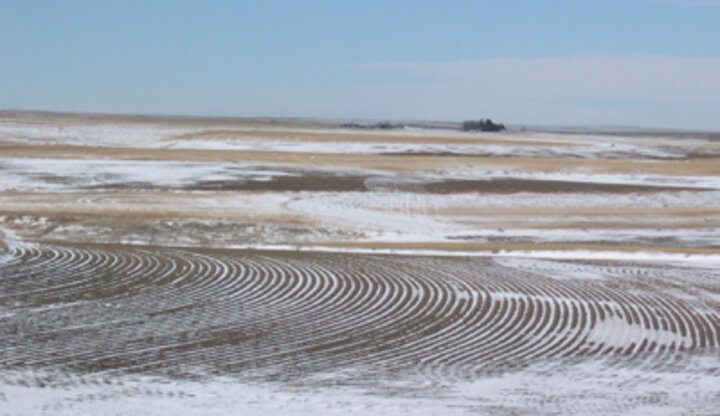
|
| Snow-covered furrows exemplifying the kind of conditions tested for and which successful varieties would do well in. |
Regional Trials. As the number of lines decreases, they are entered into regional nurseries coordinated by Dr. Bob Graybosch of the USDA Agricultural Research Service in Lincoln. These regional nurseries are grown at 20 to 35 sites each year and provide useful data that may not otherwise develop from the Nebraska sites alone. For example, lines tested in North and South Dakota provide useful winter survival data in years when we have mild winters and everything tends to survive.
State Variety Trials. Following the regional trials, a few lines are entered into the State Variety Trials. It is hard to overstate the importance of this trial. First, it is generally grown at 15 or more locations (rainfed and irrigated). Second, the trials are well marked and very public, so that the data are available to everyone. Finally, the trials are not run by the breeding program which is important to ensuring there is no conflict of interest or bias in the trials.
Initial Release and Production. After two to three years in the State Variety Trials, an exceptional line will be released to certified seed producers who will produce the seed for wheat growers. The program believes strongly in the benefits of certified seed because all of the tests use pure seed and the only way to know your seed is the same quality as used in the tests is to use certified pure seed.
Only the Very Best of the Best
It is important to understand that before an experimental line is named and released as a variety, it will be the product of one of 800 crosses per year, selected out of at least 2,000,000 early generation plants, 35,000 to 45,000 short rows, and tested for six years for end-use quality and disease resistance. It also will be tested in over 100 environments to identify where it is adapted. Approximately 50 of those test environments will be publicly announced and the data summarized so growers can make educated decisions based on their farm needs and reliable data.
This effort is supported by the University of Nebraska-Lincoln, State of Nebraska and the Nebraska Wheat Board (your check-off dollars at work) and is highly cooperative with the USDA-ARS.
P. Stephen Baenziger, Professor, Department of Agronomy and Horticulture
Bob Graybosch, USDA-ARS Research Geneticist (Plants), Lincoln
Stephen Wegulo, Extension Plant Pathologist, Lincoln
Lan Xu, Manager, UNL Wheat Quality Laboratory
